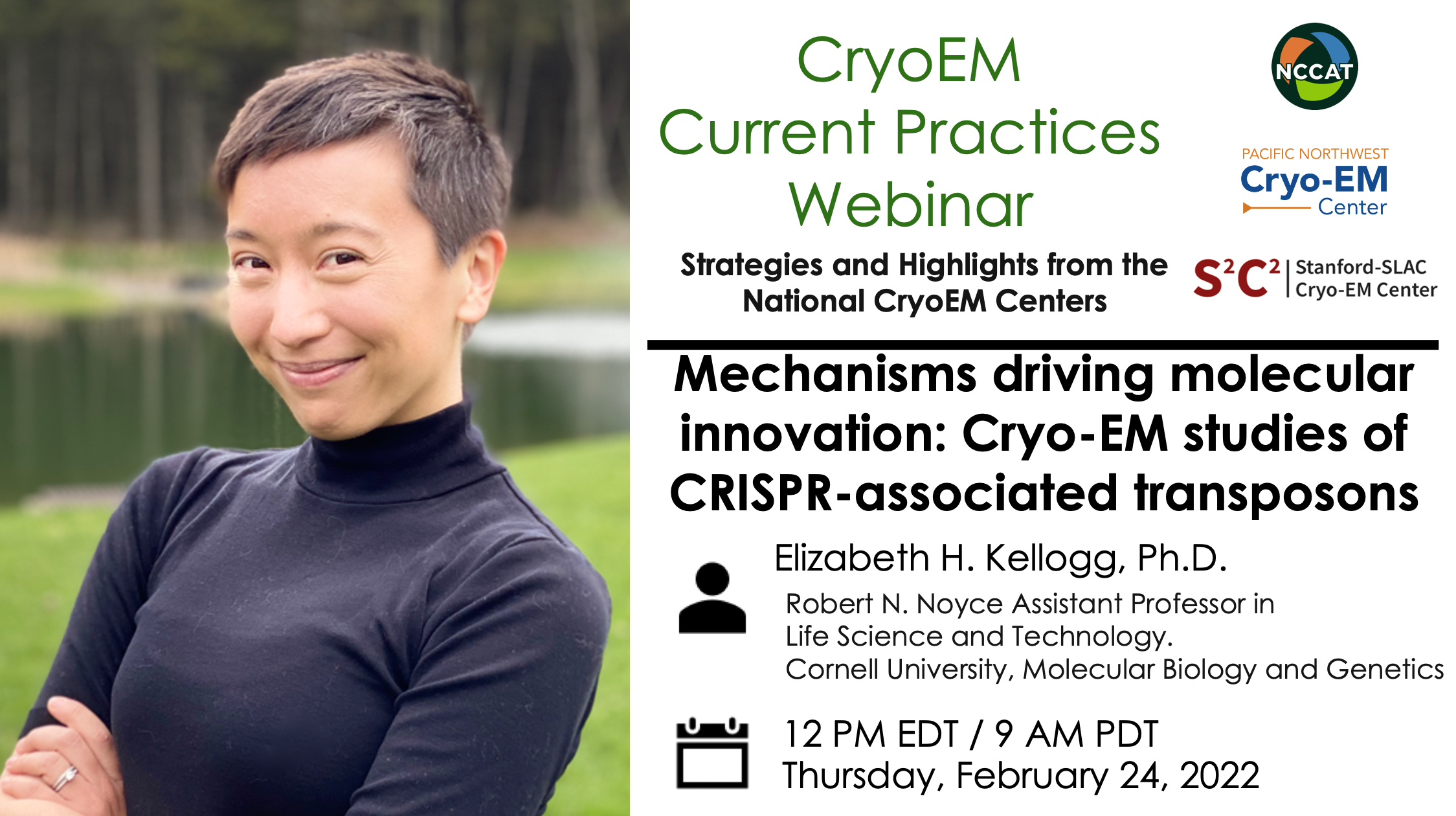The next installment of the monthly methods-focused webinar series hosted by the National Center for CryoEM Access and Training (NCCAT), the Pacific Northwest Center for CryoEM (PNCC), and the Stanford-SLAC CryoEM Center (S2C2) will be held on
Thursday February 24, 2022 at 12 PM eastern / 9 AM pacific time
Professor Elizabeth Kellogg, Robert N. Noyce Assistant Professor in Life Science and Technology. Cornell University, Molecular Biology and Genetics
will present:
Mechanisms driving molecular innovation: Cryo-EM studies of CRISPR-associated transposons
Talk Abstract: CRISPR-associated transposition systems allow guide RNA-directed integration of a single DNA cargo in one orientation at a fixed distance from a programmable target sequence. In published work, we defined the mechanism explaining this process by characterizing the transposition regulator, TnsC, from a type V-K CRISPR-transposase system using cryo-electron microscopy (EM). Polymerization of ATP-bound TnsC helical filaments could explain how polarity information is passed to the transposase. TniQ caps the TnsC filament, establishing a universal mechanism for target information transfer in Tn7/Tn7-like elements. A post-hydrolysis structure of TnsC is incapable of forming filaments and can serve as a ‘molecular ruler’ to measure the distance between the CRISPR protospacer and the ultimate point of insertion.
More recently, we have focused on the transposition mechanisms that appear to be evolutionarily conserved across diverse transposons, including that of bacteriophage Mu. I will also discuss how our mechanistic studies are revealing functional links between the CRISPR-effector complex and the transposition system components. Finally, I will discuss how these insights are allowing us to focus on the future of re-engineering CRISPR-associated transposons.
More recently, we have focused on the transposition mechanisms that appear to be evolutionarily conserved across diverse transposons, including that of bacteriophage Mu. I will also discuss how our mechanistic studies are revealing functional links between the CRISPR-effector complex and the transposition system components. Finally, I will discuss how these insights are allowing us to focus on the future of re-engineering CRISPR-associated transposons.

